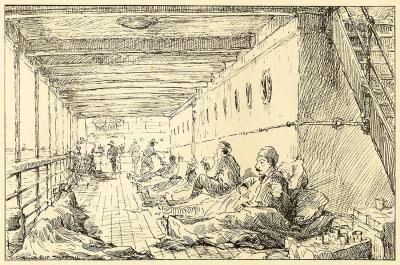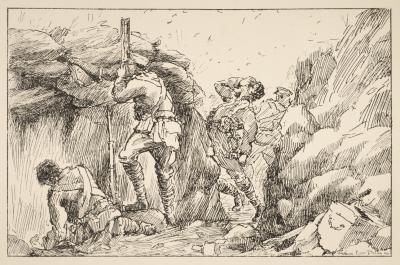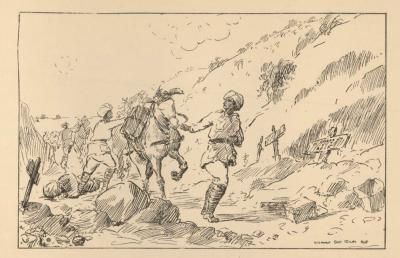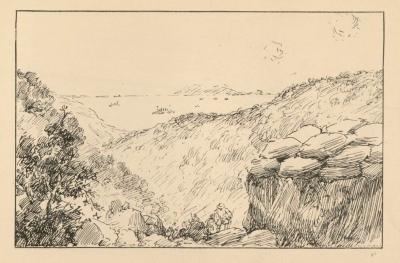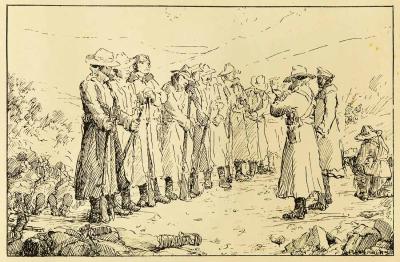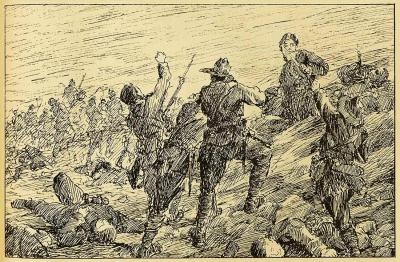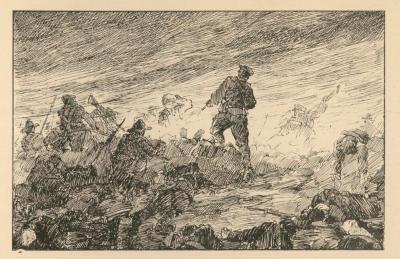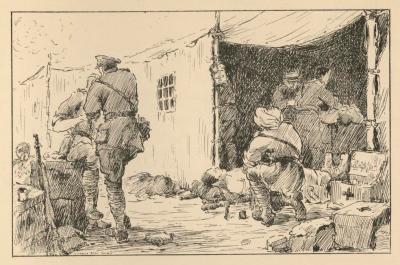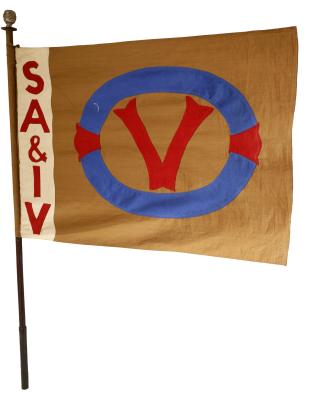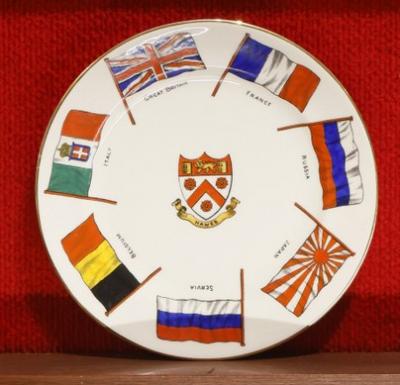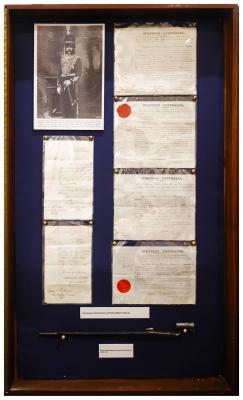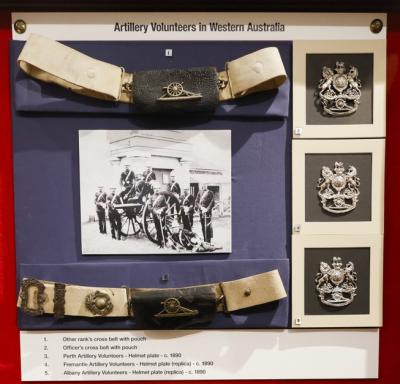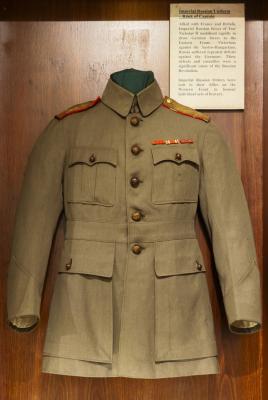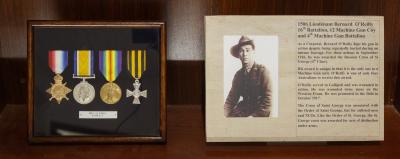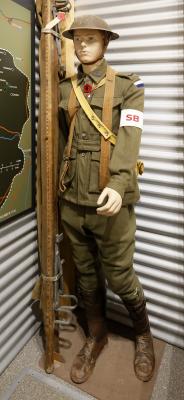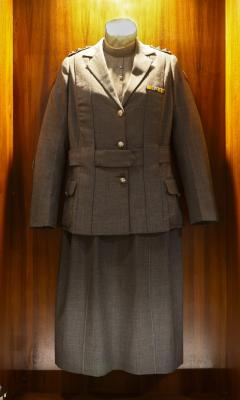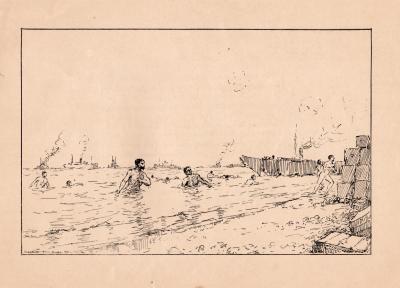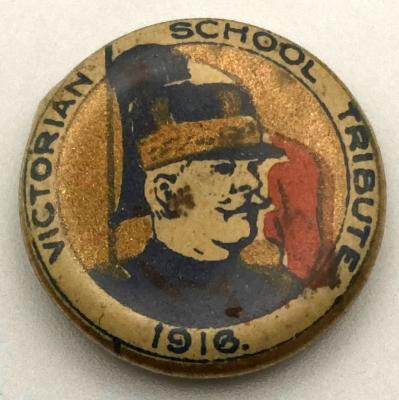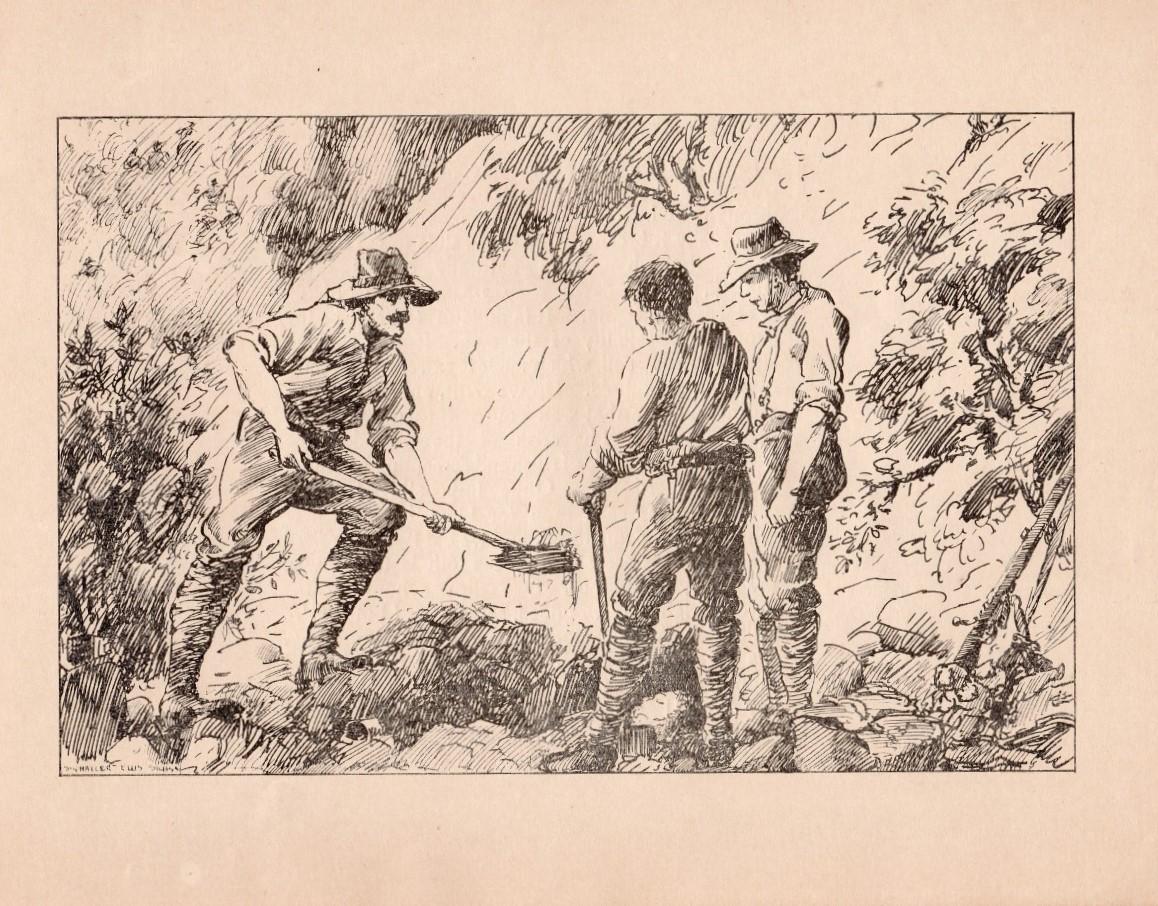World War 1, South-West Asia, Turkiye, Gallipoli, Anzac Cove, SILAS, "Crusading at Anzac"
Extract from "Crusading at Anzac", "Last of a Comrade, Anzac, May 1915", Sketch by Ellis Silas.
Ellis Luciano Silas (13 July 1885 - 2 May 1972) was a British artist and draughtsman who served as an ANZAC during World War 1. He was .born in London, Silas' grandfather was the Anglo-Dutch composer Edouard Silas and his father, Louis Silas was an artist. Silas studied art from his father and was also a student of the artist Walter Sickert. In 1907, aged 23, Silas moved to Australia where he continued to develop as a painter.He painted in Sydney and Melbourne before settling in Perth.
Silas enlisted in the Australian Imperial Force (AIF) in October 1914.. Silas was never confident that he would make a good soldier even though he had served in the Royal Naval Volunteer Reserve and had some experience of military life. Silas embarked with the 16th Infantry Battalion for Egypt in December 1914. Throughout early 1915, Silas continued his training as a signaller outside Cairo, Egypt.
On the evening of 25 April 1915, the battalion was waiting on the deck of a transport to go ashore on Gallipoli The Battle of the Landing on Gallipoli in which the 16th Battalion took part lasted from 25 April to 3 May 1915. Silas told some of the battalion's story after the Gallipoli Campaign in a book called Crusading at Anzac AD 1915. Silas' book is based on extracts from the diary and sketchbook he kept during his time at Anzac. His words and images provide a dramatic insight into the dangers, hardships and loss that accompanied the Anzacs as they tried to establish a foothold on the Gallipoli peninsula.
Silas landed on Gallipoli in the evening of 25 April with the 16th Battalion. In the first weeks on Gallipoli, 16 Battalion was reduced to two companies suffering heavy casualties at Pope’s Hill and Quinn’s Post. By 17 May, Silas had become seriously ill and was taken by hospital ship back to Egypt. From Egypt, he was transferred to England and in August 1916, was discharged from the AIF as being permanently unfit for active service.
His sketches from the front were viewed by King George and Queen Mary in May 1916. His book Crusading at Anzac was published in 1916 with forewords by Sir Ian Hamilton and William Birdwood.
Details
Details
The Last of a Comrade
This poor chap was shot in his dug-out while resting. He was lying there two days, his “billy-can” full of tea, the charred remains of the fire he was cooking by, a few biscuits scattered about, and his pipe by his side. At dusk we crept out and buried him; on the spot that fad been his resting-place when not in the firing-line. There he is still resting - awaiting the “Last Assembly.”
Anzac, May 1915
Signaler Ellis Silas was the only artist to paint and sketch actual battle scenes showing Australian soldiers in action at Gallipoli. He was commissioned in 1919 by the Australian War Records Section to paint images of Gallipoli at the initiative of C. E. W. Bean who wanted ex-servicemen to paint from their experiences. An exhibit featuring the life and art of Ellis Silas including "Crusading at Anzac" is currently on display in the Temporary Exhibition Gallery at the Army Museum of Western Australia.
Australian Army Museum of Western Australia
Australian Army Museum of Western Australia
More items like this
- World War 1, South-West Asia, Turkiye, Gallipoli, Anzac Cove, SILAS, "Crusading at Anzac"
- World War 1, Europe, Türkiye, Gallipoli, Anzac Cove, SILAS, "Crusading at Anzac"
- World War 1, South-West Asia, Turkiye, Gallipoli, Anzac Cove, SILAS, "Crusading at Anzac"
- World War 1, South-West Asia, Turkiye, Gallipoli, Anzac Cove, SILAS, "Crusading at Anzac"
- World War 1, South-West Asia, Turkiye, Gallipoli, Anzac Cove, SILAS, "Crusading at Anzac"
- World War 1, South-West Asia, Turkiye, Gallipoli, Anzac Cove, SILAS, "Crusading at Anzac"
- World War 1, South-West Asia, Turkiye, Gallipoli, Anzac Cove, SILAS, "Crusading at Anzac"
- World War 1, South-West Asia, Turkiye, Gallipoli, Anzac Cove, SILAS, "Crusading at Anzac"
Other items from Australian Army Museum of Western Australia
- Pre 1914, Flag of South Africa & Imperial Veterans
- World War 1, Goss Souvenir Plate, 1916
- Pre 1914, Commission Scrolls of William Edward Hayes
- World War 1, Height Measurement Guage, 1914
- Pre 1914, Volunteer Artillery Cross Belts and Helmet Plates
- World War 1, Russian Military Tunic. 1914
- World war 1, Medal Group, 1506 O'REILLY, 16 Battalion and 4 Machine Gun Battalion AIF
- Mannequin Display - Stretcher Bearer, Western Front, 1916
- World War 1, Uniform, Australian Army Nursing Service, EDIS, 1918
- World War 1, South-West Asia, Turkiye, Gallipoli, SILAS, "Crusading at Anzac"
- World War 1, Home Front, Commonwealth Button Fund
- World War 1, Home Front, Commonwealth Button Fund (11X) Schools' version of "French Red Cross"
